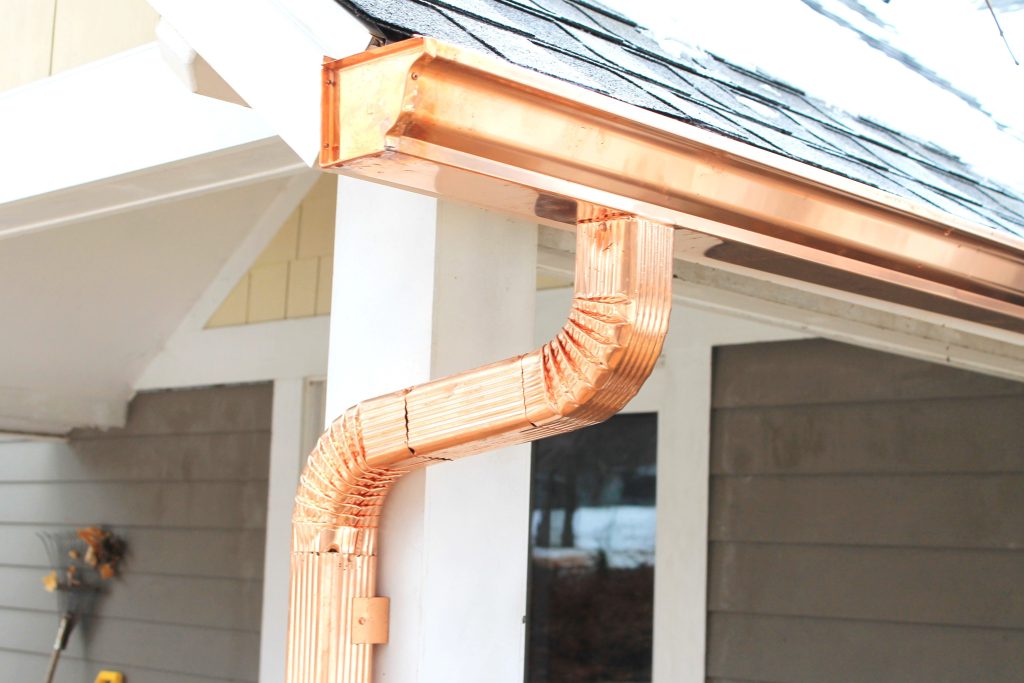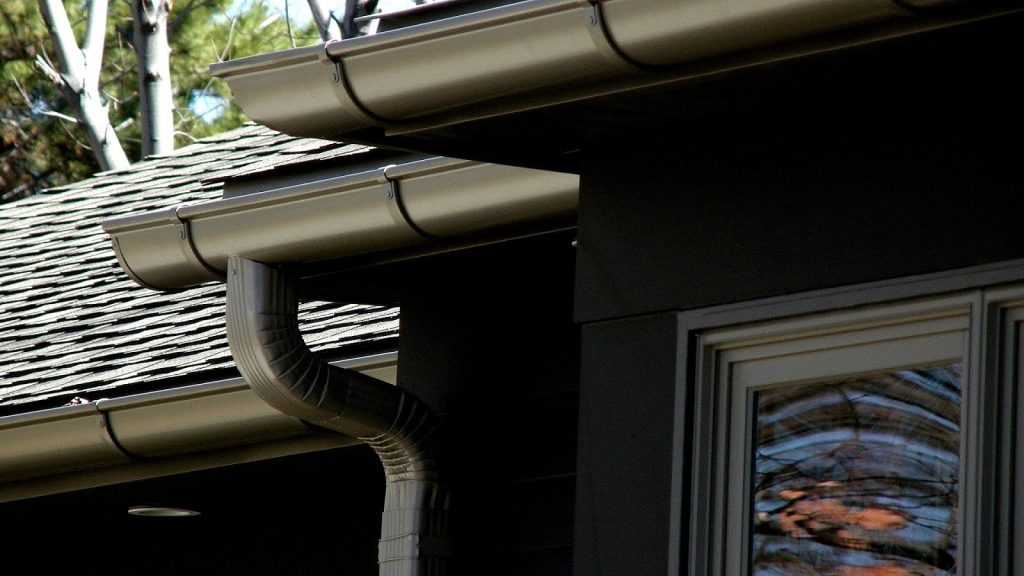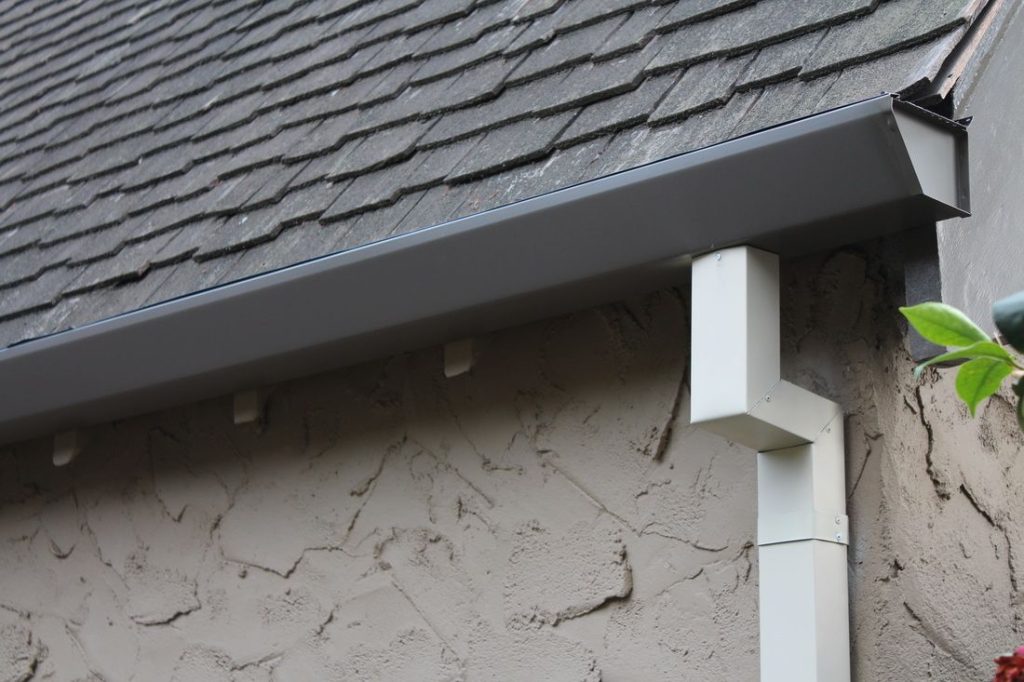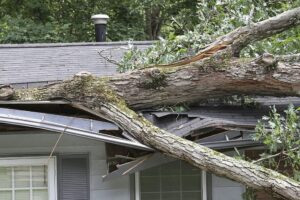When it comes to maintaining your home, gutters often don’t get the attention they deserve. However, choosing the right gutter system is crucial for protecting your home from water damage and ensuring its longevity. Whether you’re building a new home or replacing an old gutter system, making an informed decision is key to safeguarding your property.
In this blog post, we’ll explore the various factors to consider when selecting the best gutter system for your home, including material types, installation options, and maintenance requirements. We’ll also provide insights into how the right gutter system can prevent costly repairs in the future.

Why Gutters Are Essential for Your Home
Before diving into the specifics of choosing the best gutter system, it’s essential to understand why gutters are important in the first place.
Gutters are designed to collect and direct rainwater away from the roof and foundation of your home. If the water doesn’t properly flow through the gutters, it can lead to a range of issues, including:
- Water damage to the foundation: Standing water can seep into the foundation, causing cracks and compromising the structure of your home.
- Erosion: Poor drainage can erode the soil around your foundation, which can lead to settling and shifting over time.
- Roof damage: Water can back up into the roof if gutters are clogged or misaligned, leading to costly repairs.
- Landscape damage: Water runoff can erode your garden beds and damage landscaping features.
- Mold and mildew: Excess moisture around the house can lead to mold growth, which can affect indoor air quality and cause health issues.
A proper gutter system ensures that rainwater flows freely away from your home, preventing these types of damage.
Types of Gutter Systems
There are various types of gutter systems available, each with its own set of advantages and disadvantages. Let’s take a closer look at the most common types.
1. K-Style Gutters
K-style gutters are the most common type found in residential homes. They have a flat bottom and are shaped like the letter “K,” with the back edge resting against the fascia board. These gutters are often made from aluminum but can be found in other materials as well.

Advantages:
- Versatile and affordable: K-style gutters are widely available in various materials, making them a cost-effective choice for many homeowners.
- Effective water drainage: The flat bottom provides excellent water flow, and the shape allows for larger volumes of rainwater to be carried away.
Disadvantages:
- Prone to clogging: The internal corners can accumulate debris, leading to clogs if not regularly cleaned.
2. Half-Round Gutters
As the name suggests, half-round gutters are shaped like a semicircle. These gutters are commonly found in older homes and have a more traditional look. They are often made of copper, which can give your home a distinctive, high-end appearance.

Advantages:
- Aesthetic appeal: Half-round gutters provide a classic, elegant look that pairs well with older or historical homes.
- Less prone to clogging: Their smooth design makes them less likely to accumulate debris compared to K-style gutters.
Disadvantages:
- More expensive: Copper and other materials used for half-round gutters can be more costly than K-style gutters.
- Limited water capacity: While they can handle a fair amount of water, they might not be as efficient in areas with heavy rainfall.
3. Seamless Gutters
Seamless gutters are custom-made on-site to fit the exact measurements of your home. They don’t have seams (joints) along the length of the gutter, which minimizes the risk of leaks and other issues.

Advantages:
- Leak-free performance: Since they don’t have seams, seamless gutters are less likely to leak, offering long-term reliability.
- Low maintenance: Fewer seams mean fewer opportunities for debris to build up or for the gutter to corrode.
Disadvantages:
- Higher cost: Seamless gutters are often more expensive due to their custom nature and professional installation.
- Difficult to repair: If a section is damaged, the entire piece may need to be replaced.
4. Fascia Gutters
Fascia gutters are built directly into the fascia board of the roofline, creating a seamless appearance that blends well with modern architectural designs. They are usually found in more contemporary homes.

Advantages:
- Sleek design: Fascia gutters create a clean, modern look and are aesthetically pleasing.
- No need for brackets: Since the gutter is integrated with the fascia, there’s no need for visible brackets or hangers.
Disadvantages:
- Expensive to install: Fascia gutters require precise installation and can be more costly than other types.
- Limited options for material: You may be limited in terms of available materials for fascia gutters, depending on your location.
Choosing the Right Gutter Material
The material you choose for your gutter system will significantly affect its durability, maintenance needs, and appearance. Here are the most common materials used for gutters:
1. Aluminum
Aluminum is the most popular choice for gutters because it’s lightweight, durable, and resistant to rust. It is also relatively affordable and available in a wide range of colors.
Advantages:
- Lightweight and rust-resistant
- Available in K-style, half-round, and seamless options
- Relatively easy to install
Disadvantages:
- Can dent or bend easily
- Needs regular maintenance to prevent clogging
2. Copper
Copper gutters are highly durable and provide an upscale look. Over time, copper develops a natural patina that adds character to the home.
Advantages:
- Long-lasting and corrosion-resistant
- Beautiful aesthetic appeal
Disadvantages:
- Very expensive
- Requires professional installation
3. Vinyl
Vinyl gutters are inexpensive and easy to install, making them a good option for DIYers. However, they are not as durable as other materials and can crack or warp in extreme temperatures.
Advantages:
- Low cost and easy to install
- Available in various colors
Disadvantages:
- Less durable than aluminum or copper
- Can crack in extreme temperatures
4. Steel
Steel gutters are strong and resistant to damage, but they are prone to rust if not properly coated.
Advantages:
- Durable and strong
- Available in galvanized and stainless steel options
Disadvantages:
- Can rust if not properly maintained
- Heavy and more challenging to install
Gutter Protection Options
While a good gutter system can handle a lot of water, additional protection can help ensure they perform optimally for years to come. Gutter guards or covers are designed to prevent debris from entering the gutter and causing clogs.
- Mesh Guards: These are placed over the gutters to allow water to flow through while keeping leaves and debris out.
- Foam Guards: These are inserted into the gutter, acting as a filter to block debris while allowing water to flow freely.
- Reverse Curve Guards: These direct water into the gutter while forcing debris to slide off the edge.
Professional Installation vs. DIY
While it may be tempting to save money by installing gutters yourself, professional installation is often the best choice, especially for seamless gutters. A professional will ensure that your gutters are installed correctly and will be more likely to last longer without issues.
If you do decide to install gutters yourself, make sure to carefully follow all instructions and ensure that the gutters are pitched correctly for optimal water flow.
Conclusion
Choosing the right gutter system for your home is an important decision that can have a significant impact on the longevity and health of your property. By considering factors such as the type of gutter, material, and gutter protection, you can ensure that your home remains protected from water damage and looks great for years to come.

If you’re unsure about which gutter system is right for your home, don’t hesitate to contact a professional. Atlas Roofing & Restoration is an expert in roof and gutter installations, offering a wide range of options tailored to your specific needs. With years of experience and a commitment to quality, they can help you choose and install the perfect gutter system to protect your home.
Don’t wait for the next storm—ensure your gutters are up to the task today!




